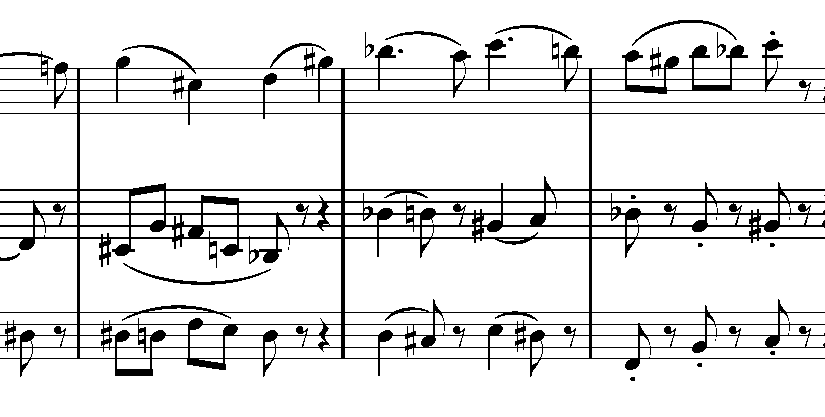Among the intimidating aspects of playing Wagner Tuba is the subject of transpositions. Even though horn players should be well-versed in sight-transposition, the keys and traditions of Wagner Tuba writing can be an impediment to comfort.
Generally speaking I believe a WT player should be comfortable reading in the instruments’ native keys: B-flat (basso) for tenor, and F for bass. Of course, the ever-contradictory Wagner writes in other keys, but that is another topic.
Having said that, I am also a pragmatist, and if attempting to transpose on sight creates unforced errors in your performance, then you should take whatever measures are needed to eliminate unnecessary sources of uncertainty. I myself currently prefer to play the Bruckner 7 tenor parts from parts transposed to F, as furnished in John Ericson’s helpful book Playing the Wagner Tuba: A Handbook for Hornists.
I wish to warn, however, against another set of transposed parts for Bruckner 7 that currently can be found in IMSLP. These parts, which show a “copyright” date of 2001 and an upload date of 2014, I believe should be shunned by the serious student of the Wagner Tuba. The reason is simple: the symphony is in E major, but these parts have all been transposed into enharmonic flat equivalent. As a consequence, if one player is reading from these parts and anyone else is trying to communicate about pitches from the score or any other more-original source, there will be confusion and delay.
A word about Bass Wagner Tuba in F, and transposition skills in general
Like horn, bass WT is natively (acoustically) an F instrument. In Bruckner and other first-generation composers for WT, it sounds not only a fifth lower than written, but a fifth plus an octave. In other words, on horn in F the “C” in the treble clef staff sounds the F above middle C. In bass Wagner Tuba, a written “C” in the treble clef staff sounds the F below middle C. This execution is and must be just more-or-less understood by the student of WT.
This leads me to my second objection to the transposed Bruckner 7 parts on IMSLP: the bass Wagner Tubas have been transposed into the “horn” octave, including the employment of bass clef. This again departs substantially from the traditional notation of bass tuba in F, and is another potential obstacle to communication among the players in rehearsal.
Sight-transposing at the octave is no less a useful skill for the horn and Wagner Tuba plaer as is any other transposition. Combining E-flat transposition with the octave enables the horn player to play bass-clef parts (such the tenor part of any four-part hymn setting) at sight in the correct register. I would encourage all serious students to cultivate the common Wagner Tuba transpositions (B-flat basso, E-flat, bass tuba F “basso”, and standard “horn in F”) by selecting some moderately easy etudes–for example the first few selections in the Melodious Etudes for horn compiled and edited by Larry Clark and Sean O’Loughlin–and play these sequentially in each transposition until comfortable.
